Search behavior has fundamentally changed.
People ask ChatGPT direct questions, rely on AI Overviews for instant answers, and expect synthesized information from multiple sources.
Optimizing for these AI systems determines whether your content gets cited and recommended—or stays invisible.
This guide covers the fundamentals to get you started.
For deeper technical implementation and advanced strategies, check out our comprehensive generative engine optimization (GEO) guide.
Let me walk you through how to optimize for AI search, track your AI visibility, and stay ahead as generative search reshapes SEO.
What Is AI Search Optimization?
AI search optimization is the practice of making your content frequently referenced and prominently featured by language models like ChatGPT, Google's AI Overviews, and Perplexity.
Also known as generative engine optimization (GEO), this LLM optimization approach focuses on getting cited more often and positioned higher in AI-generated responses rather than traditional search engine results.
This includes optimizing for platforms like:
- Google AI Overviews: The AI-generated summaries that appear above organic search results
- ChatGPT Search: Citations and recommendations in ChatGPT's responses
- Perplexity: Source attribution in AI-powered research queries
- Copilot: References in Microsoft's conversational search experience
Among others.
Success requires understanding how these platforms select sources. And making sure your content consistently appears as their preferred citation—ideally as the primary or first-mentioned source.
How AI Search Differs from Traditional SEO
Traditional SEO optimizes for rankings. AI search engine optimization optimizes for citations.
AI systems now act as intermediaries between users and content, filtering and synthesizing information rather than just linking to it.
This changes how people search and consume information:
- People ask full questions. Instead of "email marketing tips," they ask "What's the best way to increase email open rates for B2B companies?"
- AI provides complete answers. Users get comprehensive responses without clicking through to multiple websites.
- Brand awareness matters more than traffic. Being cited builds authority even when users don't visit your site.
- Multiple sources get combined. AI pulls information from several websites to create one answer.
All of these differences mean you need to write differently. Focus on being easily referenced and cited rather than just comprehensive.
Why AI Visibility Is the Next SEO Frontier
AI visibility is the next SEO frontier for several reasons.
First, AI search is exploding.
AI Overviews now appear on 13% of searches, doubling in just two months, according to our AI Overviews research.
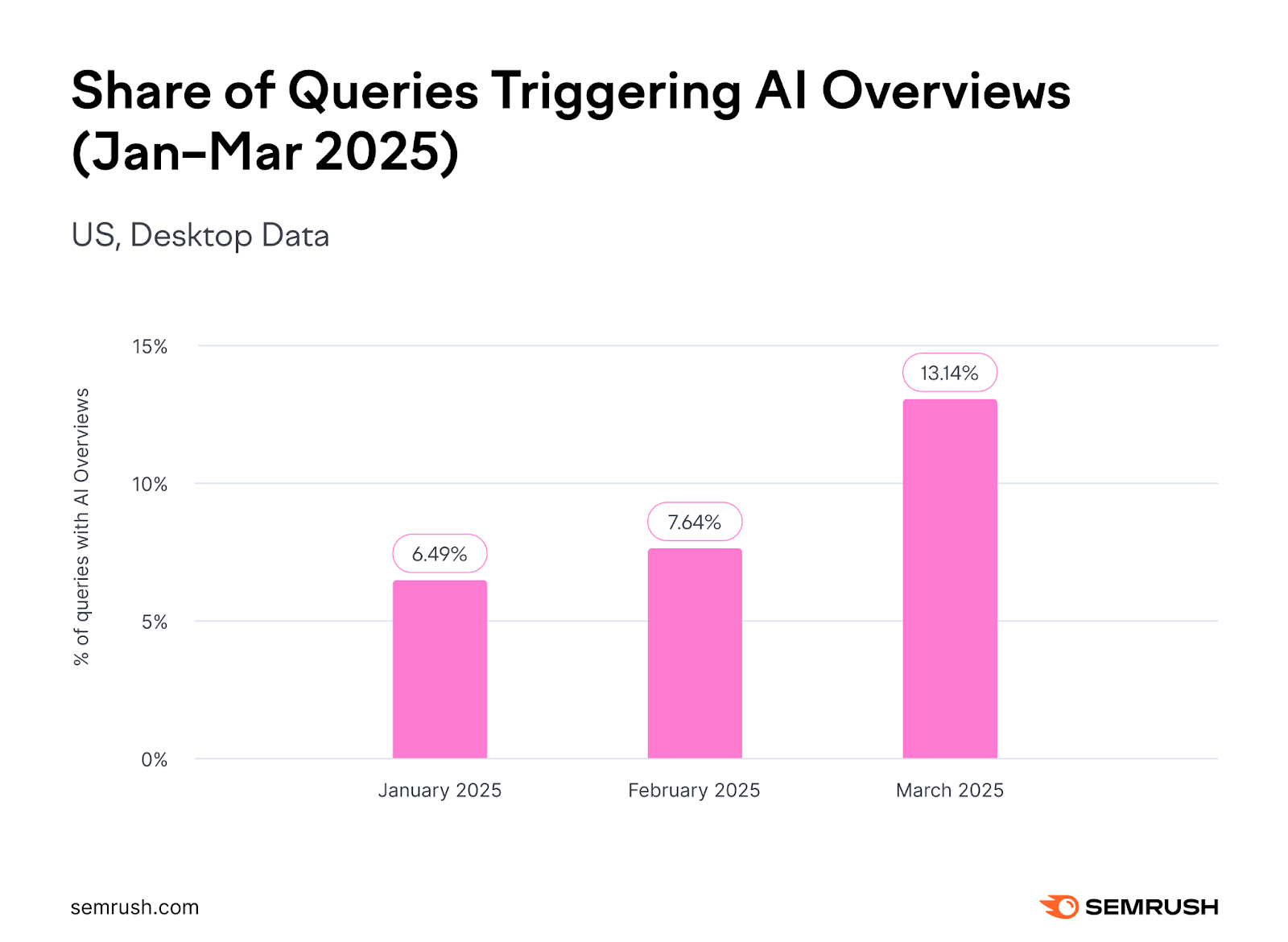
ChatGPT gained 8x more weekly active users since October 2023. Perplexity is becoming the go-to research tool. Google's AI Mode is rolling out to millions more users.
But here's the stat that changes everything: AI search visitors convert 4.4 times better than traditional organic visitors.
By the time someone finds you through an AI citation or mention, they're educated about your solution and closer to making a decision.
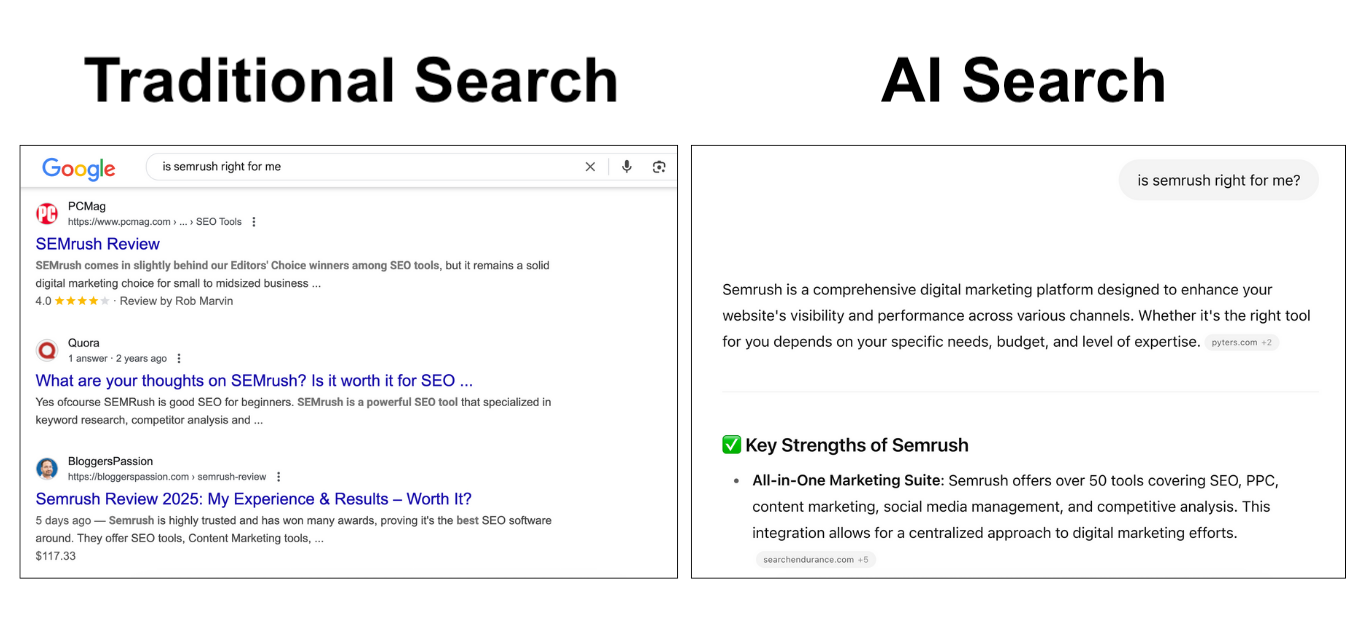
And the opportunity is massive.
Right now, AI search represents a largely untapped channel. While traditional SERPs are saturated with competition, AI platforms are citation-hungry, and the field isn't crowded yet.
This means there’s an unprecedented opportunity for newer or smaller sites to gain visibility by optimizing specifically for AI.
Companies optimizing for AI visibility now may capture this higher-intent traffic while competitors fight over declining traditional search volume.
The window won't stay open forever. But you don't need to overhaul everything to get started.
How to Optimize for AI Search Engines
You don't need to overhaul your entire content strategy to start getting AI citations.
Here are five quick ways to improve your AI visibility this week.
1. Verify AI Systems Can Access Your Content
Before optimizing for citations, confirm that AI crawlers can actually reach your pages.
Check your robots.txt file at yoursite.com/robots.txt. Look for blocks against common AI crawlers like:
- GPTBot (ChatGPT)
- CCBot (various AI systems)
- Claude-Web (Anthropic)
If you see Disallow: / for these crawlers, you're blocking AI access.
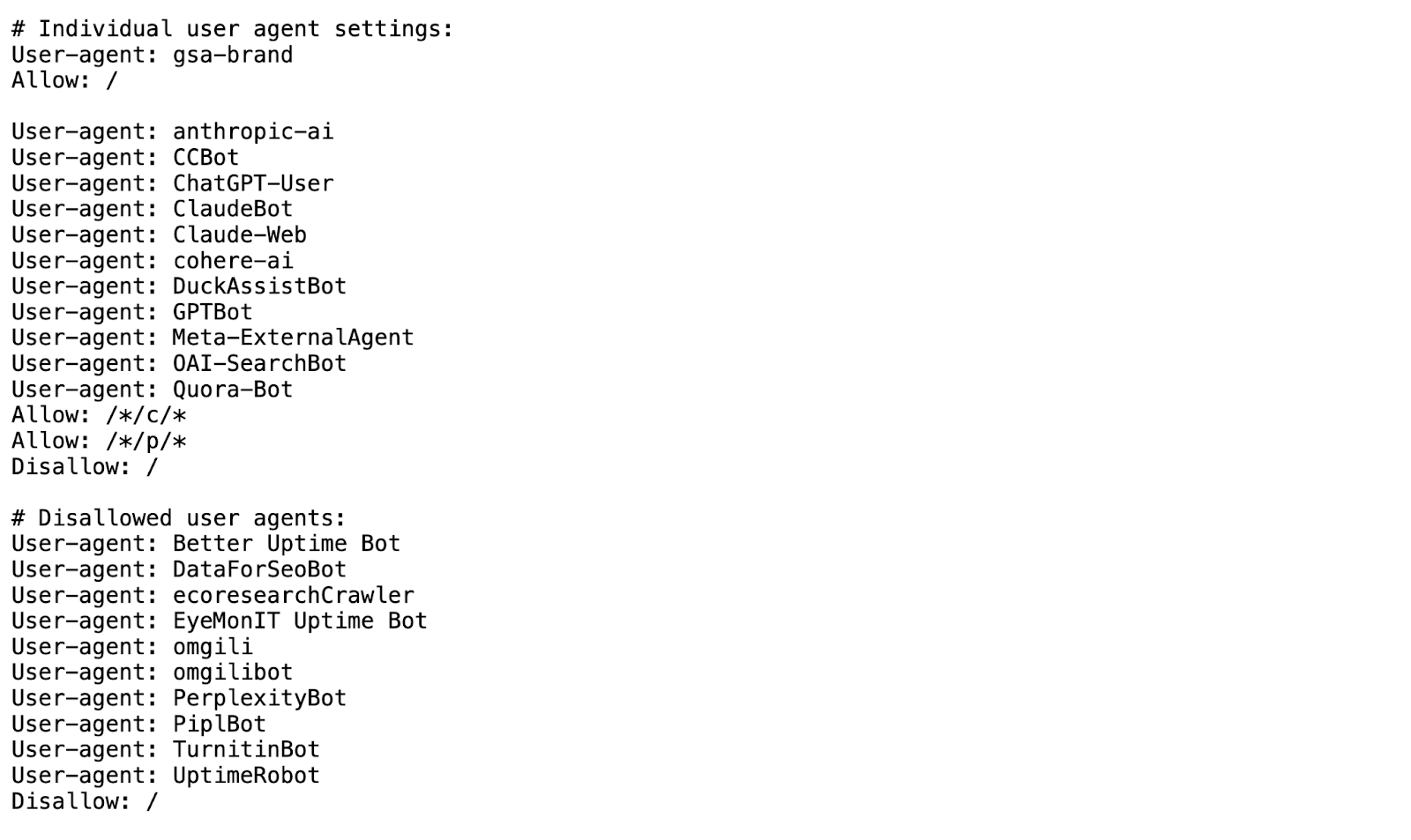
Quick verification: Search for your brand name or key topics on ChatGPT, Perplexity, and Claude. If your content never appears as a source, you may have accessibility issues.
Check that your most important pages aren't blocked by:
- Login walls or paywalls
- JavaScript-only navigation that crawlers can't follow
- Missing or broken canonical tags
- Server errors or extremely slow loading times
Quick action: Test 3-5 of your top pages by searching for their exact titles on AI platforms. If none appear as sources, investigate your technical setup.
2. Add Specific Statistics to Your Best Content
Start with 2-3 articles that already rank well for your target keywords.
Replace vague statements like "many businesses struggle with email marketing" with concrete data: "Email marketing generates $42 for every $1 spent, according to Litmus's 2024 research."
In our analysis of AI citations, content with specific, sourced statistics gets referenced more often than vague generalizations.
Like this:
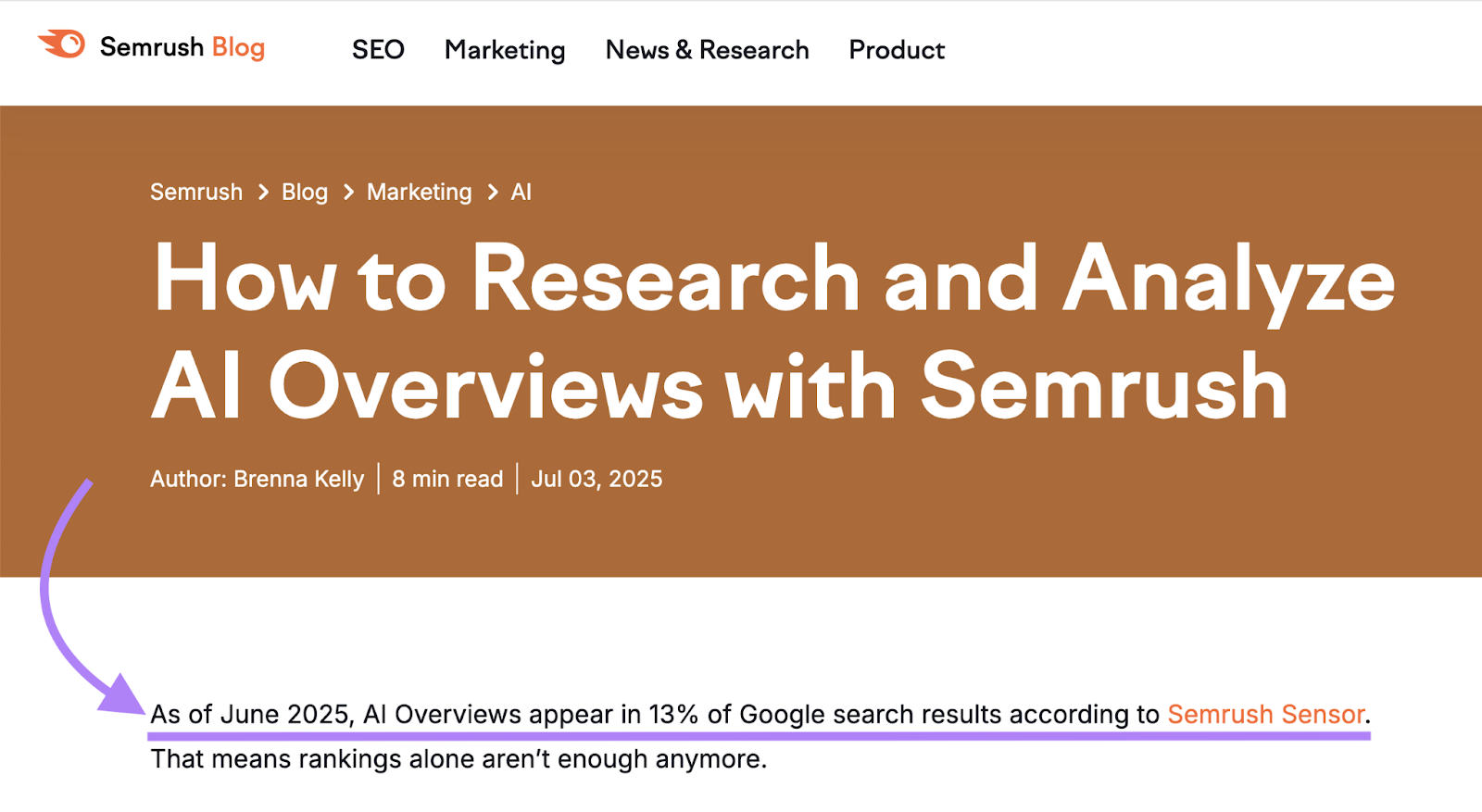
This single change often produces the fastest AI citation improvements.
Quick action: Spend 30 minutes finding 2-3 relevant statistics for your top-performing articles and add them with proper attribution.
3. Test Your Topics on AI Platforms
Ask ChatGPT and Perplexity the same questions your audience would ask about your niche or expertise.
Note which competitors get cited and what types of sources appear.
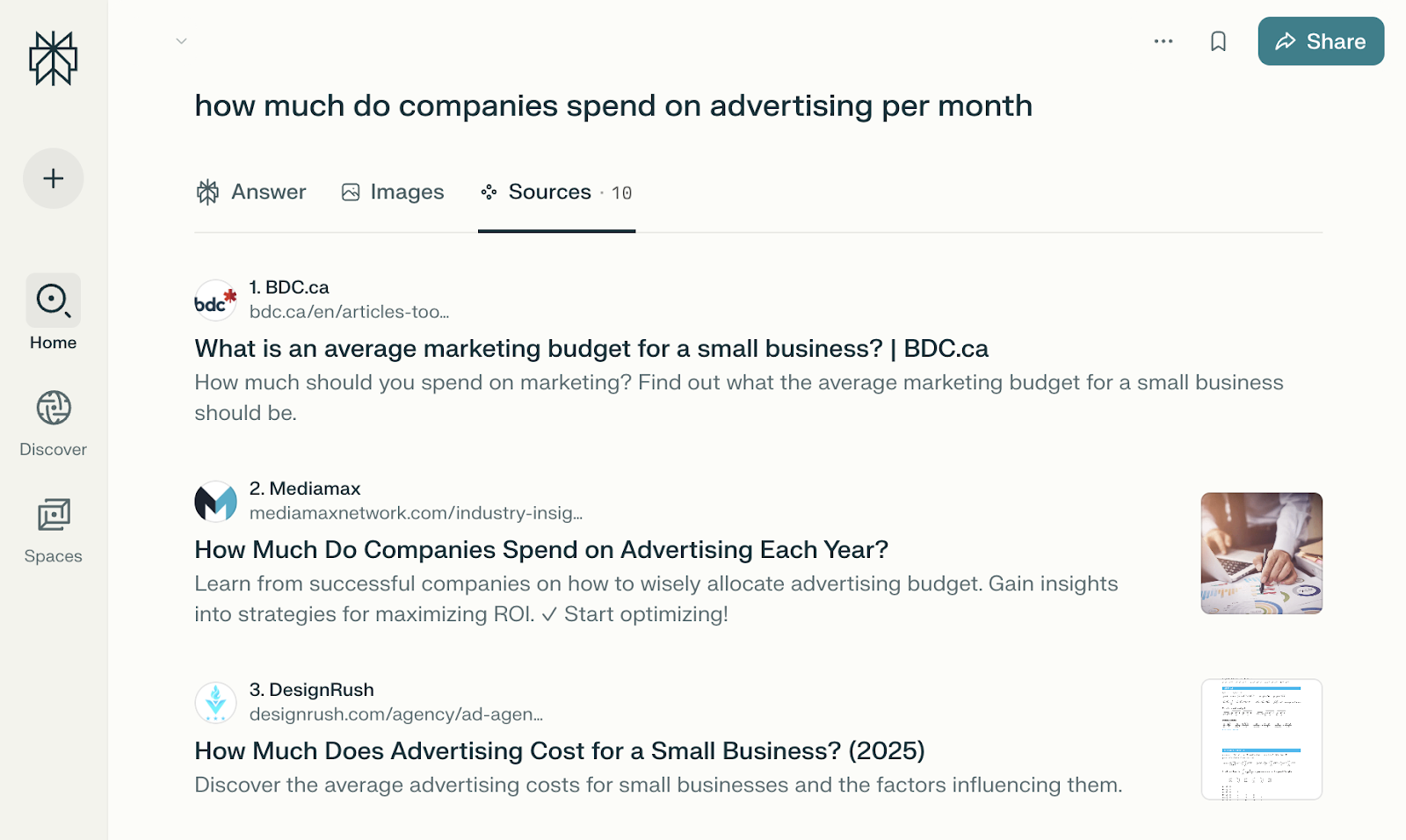
If you're consistently missing from results while competitors appear, you've identified a content gap.
Pay attention to how AI systems phrase their responses—this shows you the language and structure they prefer.
Then mirror that language and formatting in your own content.
For example, if AI responses consistently use numbered lists or start with direct definitions, incorporate those elements into your articles.
Quick action: Test five questions related to your main topic across ChatGPT, Perplexity, Copilot, and Google's AI Overviews.
Document which sources get cited and analyze what those sources do differently.
For example, do they use specific data formats, particular heading structures, or certain types of examples.
Finally, identify one element from the most-cited sources that you can incorporate into your next piece of content.
4. Structure Content for Direct Answers
Write content that answers questions completely in standalone sections, providing direct answers upfront instead of building suspense.
AI systems extract chunks of content, so each section should make sense without context from other parts of your page.
Use question-based headings like "How to Reduce Website Loading Time?" rather than vague titles like "Performance Tips."
Then, answer that question immediately.
Start with "You can reduce website loading time by optimizing images, enabling compression, and choosing faster hosting" before diving deeper.
Like this:
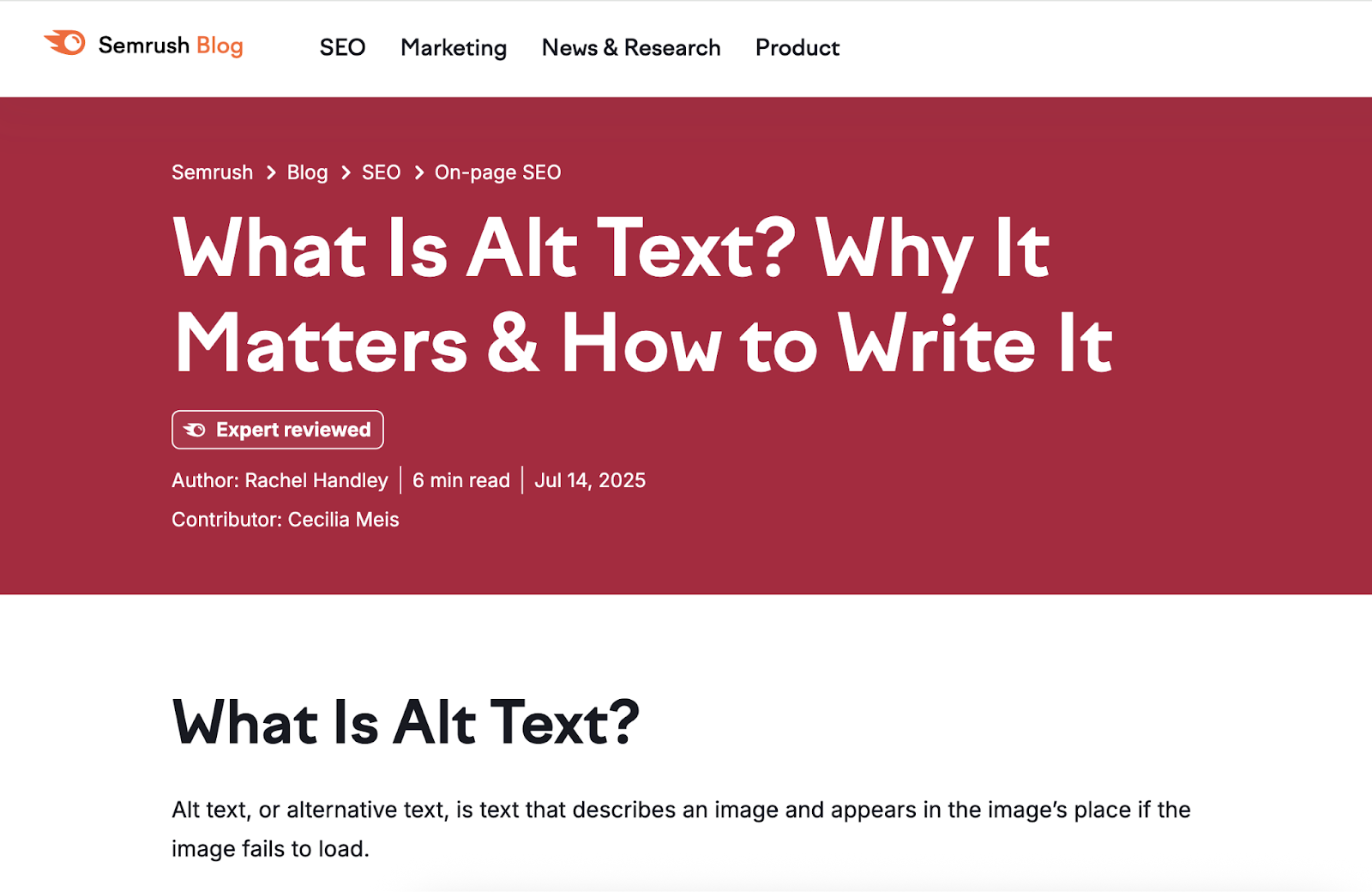
Quick action: Rewrite the headings in one existing article to directly answer questions your audience asks. Then make sure the opening paragraph under each heading provides a complete answer before expanding on details.
5. Make Yourself Easy to Quote
Include expert quotes, case study results, and concrete examples AI systems can extract and cite.
AI systems excel at creating generalizations by synthesizing multiple sources, but they need specific data points and examples to cite as evidence.
Generic statements like "Our approach works well" don't provide the concrete details that make content citation-worthy.
Instead of "Our approach works well," write "When we reduced client page load time from 4.2 to 1.8 seconds, organic traffic increased 43% within two months."
The specific numbers, timeframe, and measurable outcome give AI systems something concrete to reference when supporting broader claims about website performance.
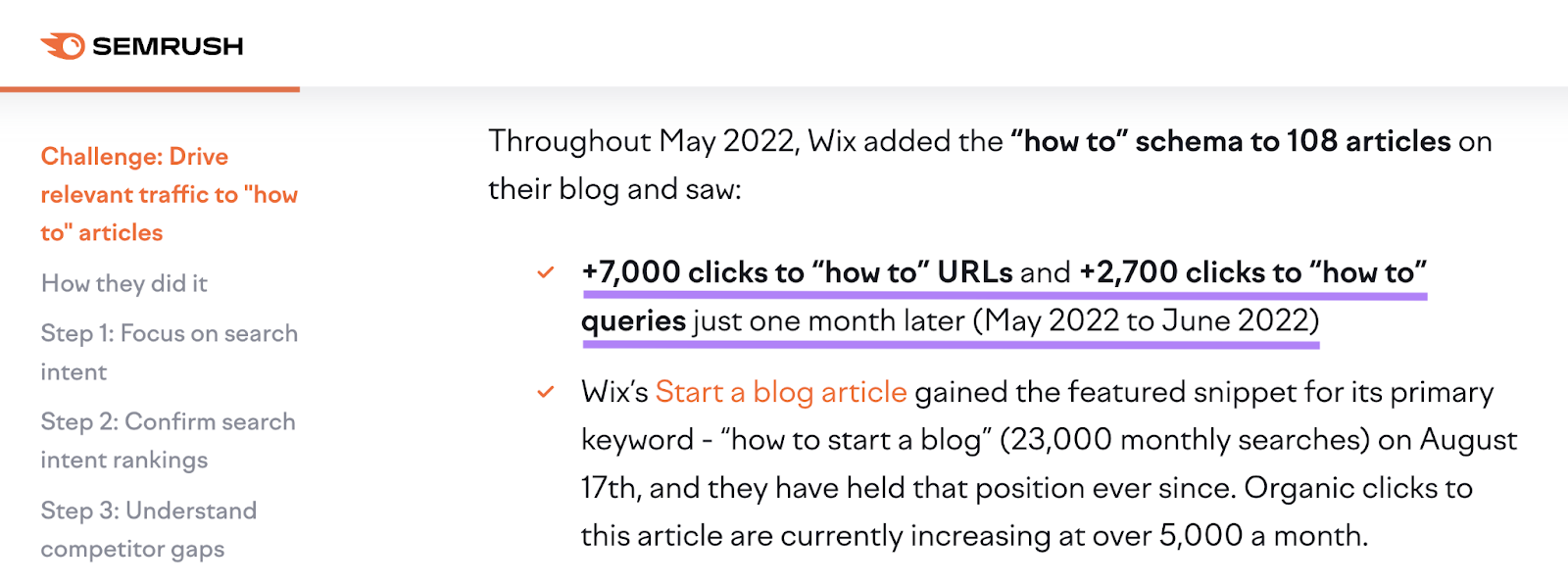
Beyond quotable content, establish yourself as a quotable source.
Add your credentials and experience to author bios. AI systems may look for authority signals when deciding which sources to cite.

Quick action: Add one specific example or case study result to your bio and include it in your next piece of content.
These changes won't transform your AI visibility overnight, but they create the foundation that makes other optimization techniques more effective.
Start with the statistics—it's the highest-impact, lowest-effort improvement you can make.
Tools That Help You Optimize for AI Search
Free testing works for getting started, but you can't manually check dozens of topics across multiple AI platforms every week.
You might be wondering:
What software monitors my brand mentions in AI search results? Semrush AIO monitors your brand mentions across AI search platforms like ChatGPT, Perplexity, and Gemini and provides comprehensive visibility into how your brand appears in AI-generated responses.
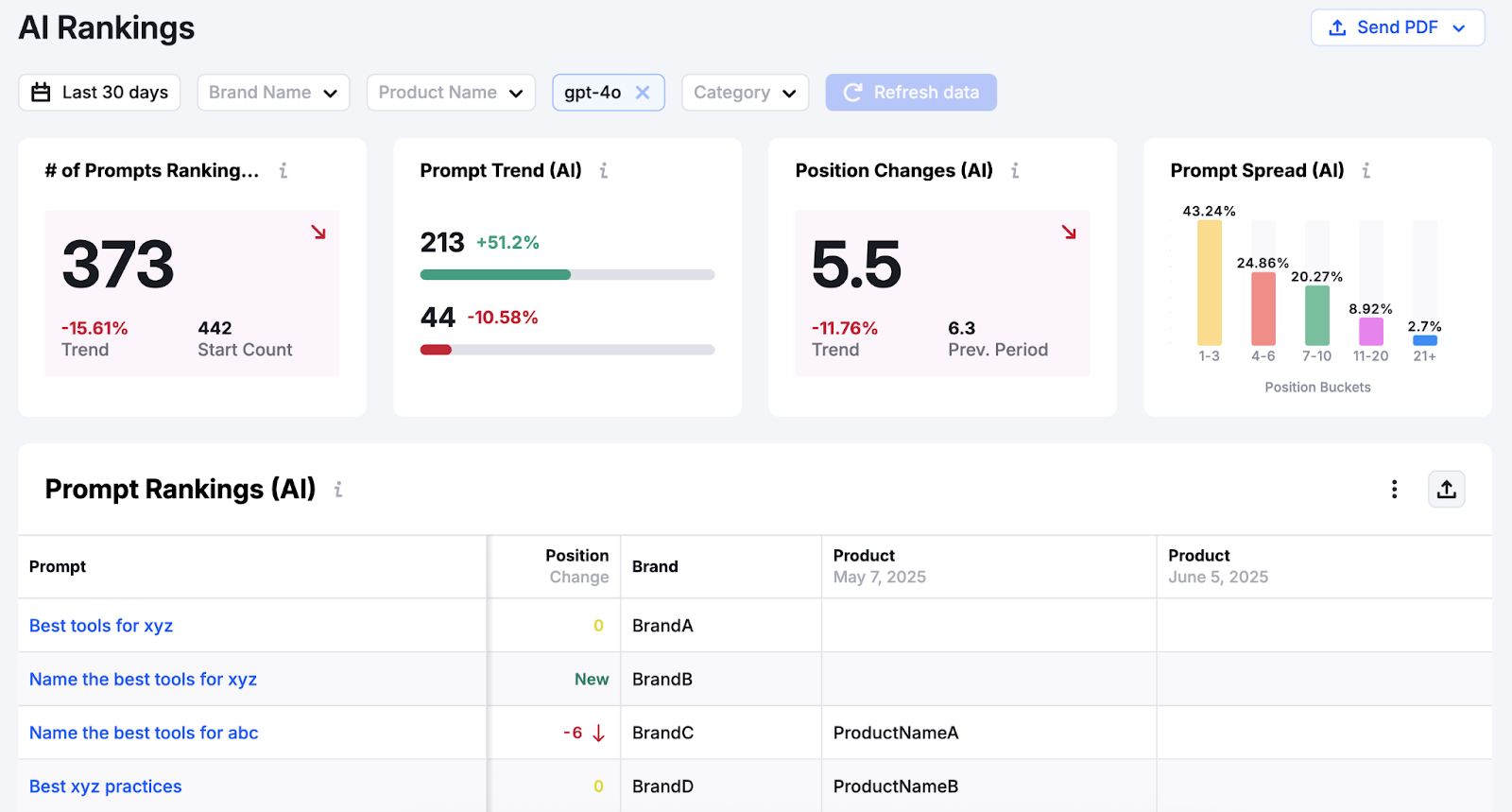
And if you’re wondering which tools help benchmark your AI visibility against competitors?
Semrush AIO also helps you benchmark your AI visibility against competitors, allowing you to track brand mentions, sentiment, and market share across AI search platforms.
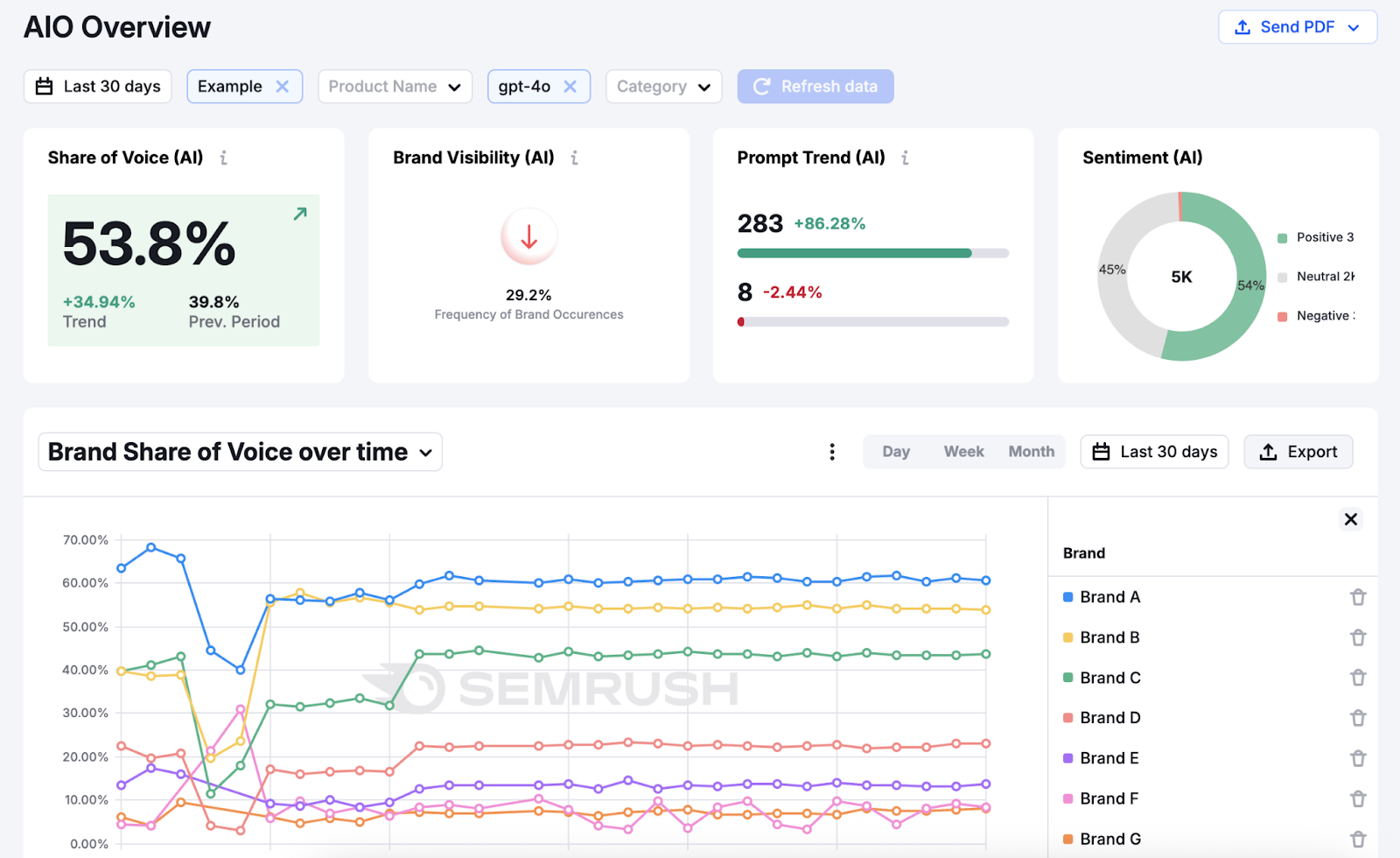
When Free Testing Isn't Enough
Manual platform testing becomes impractical when you need to:
- Monitor 20+ topics and subtopics in your niche consistently (like keyword research, technical SEO, content writing, and link building if you're in SEO)
- Track your brand and competitor mentions across multiple AI platforms
- Measure sentiment changes over time
- Scale beyond basic visibility checking
AI Monitoring and Optimization Tools:
Brand Mention Tracking:
- Semrush Enterprise AIO: Tracks which competitors get cited for your topics, monitors brand sentiment in AI responses, and alerts you to citation opportunities
- Semrush AI Toolkit: Analyzes how AI platforms discuss your brand and provides strategic recommendations for improvement
Technical Validation:
- Google's Rich Results Test: Verify your structured data markup works properly
- Robots.txt checker: Ensure you're not blocking AI crawlers like GPTBot or CCBot
Testing Framework That Scales:
Start with free testing methods for 2-3 core topics before investing in paid tools. Then use Semrush AIO when you need:
- Automated monitoring across multiple AI platforms
- Competitor comparison and benchmarking
- Historical data and trend analysis
- Alert systems for brand mention changes
Next Steps: Start This Week
You've learned how to optimize for AI search.
Here’s a simple action plan for you to start.
Today (30 minutes):
- Find 2-3 statistics for an article that could use more authority and add them with sources
- Ask ChatGPT and Perplexity one question your audience would ask about your topic, then note which competitors get cited and what language patterns the AI uses
This week:
- Rewrite 3-5 key headings in one article as direct questions. Then ensure the first paragraph under each directly answers the question
- Add one specific case study or example to your author bio
- Test whether competitors appear when you search your topics on AI platforms. Then identify one element from the most-cited sources that you can adapt for your content
That's it. Start with these five actions before diving deeper.
Your competitors are still figuring out what AI search optimization means. You're already ahead.